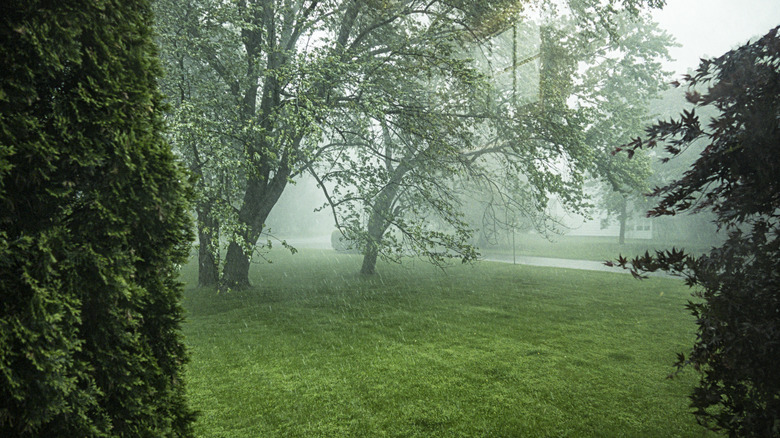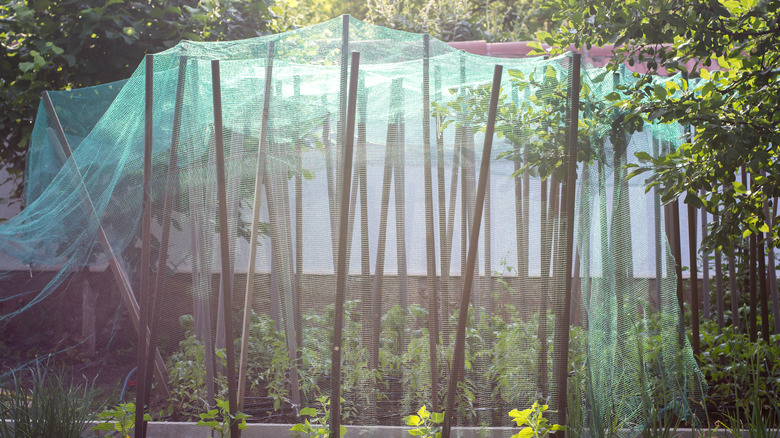How To Keep Plants Protected During A Thunderstorm
Thunder, lightning, and sheets of rain: It's a good, old-fashioned thunderstorm. But while you can enjoy a raucous storm from the comfort of your cozy couch, your plants aren't so lucky. A thunderstorm can actually be a threat to your garden and comes with all sorts of damage-inflicting events; hail can rip your shade garden to shreds, high winds can blow over young trees, and too much rain can drown out your flower beds. That's why it's important to prepare your plants before big storms, lest you risk damaged foliage and fallen stalks. Start by checking the forecast to try to predict what kind of weather you'll be dealing with. A simple rainstorm requires fewer precautions than a nor'easter, for example.
Good storm preparation begins with knowing your garden well. Survey your yard and notice what sticks out — are there low-hanging branches next to your porch that could easily blow into your siding? If they're less than 1 inch thick or looking particularly sickly, prune them. As a rule of thumb, you can keep thicker branches that sit at between a 45- to 90-degree angle from the main trunk. You'll want to keep an eye out for bowing tree branches and stay on top of pruning new growth and splintering limbs.
Prune branches and secure smaller plants prior to a storm
As for any smaller trees or shrubs, be sure to stake them down to protect against high winds. If you're expecting a particularly nasty thunderstorm, cover any plants that are located closer to the ground. You can always invest in hail netting, but if you're looking for more budget-friendly protection, burlap sacks, old blankets, and tarps work just as well. And bring potted plants and hanging baskets inside — they can easily be damaged in a storm. Not to mention, they can become dangerous projectiles and cause damage to people and property if hurled about.
Once the rain has abated and the skies have cleared, head on out to your yard to survey the damage. Despite your best efforts, you may see fallen branches, ripped foliage, and leaning shrubs or small trees. In many cases, plants will grow out of hail damage, but hail can sometimes leave small scars on leaves that become more obvious as the plants mature. In this case, you can prune the damaged leaves, but take care not to overdo it — stick to the three D rule when pruning.
Standing water that occurs after heavy rain can also damage your plants; too much water in the soil can cut off the supply of oxygen to your plants' roots. If this is the case, try digging a small channel away from the standing water in your garden to encourage water to drain away naturally. Planting a rain garden is a smart, preventative solution for dealing with excess floodwater.

